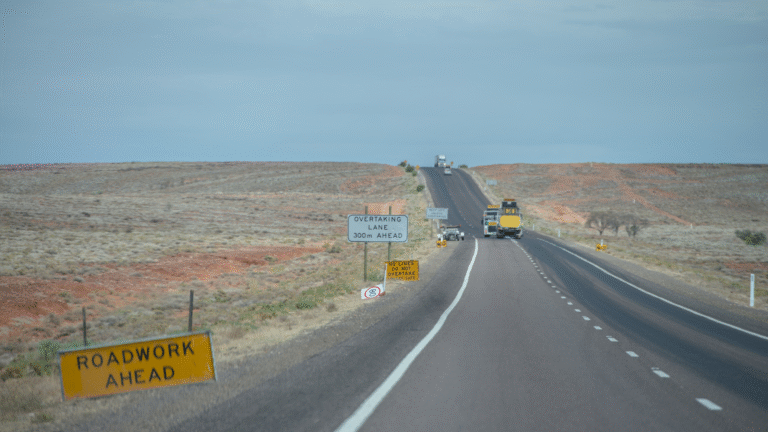Electric vehicles are booming in Australia’s cities—but what about the bush? With vast distances, rugged conditions, and limited infrastructure, many Aussies assume EVs aren’t cut out for Outback life.
But a growing number of early adopters across regional and remote Australia are proving otherwise. We spoke with real EV owners living and working in the Outback to find out what it’s really like to daily drive electric—beyond the black stump.
Table of Contents
- Meet the Outback EV Pioneers
- Charging in the Middle of Nowhere
- How Range Anxiety Plays Out on Remote Roads
- Off-Road Performance and Dusty Conditions
- Solar, Home Setups and Off-Grid Living
- Lessons from Real Owners
- What Needs to Improve
- Final Thoughts
1. Meet the Outback EV Pioneers
While EVs are still a rare sight west of the Great Dividing Range, a passionate group of owners is quietly blazing the trail. From teachers in Broken Hill to wildlife rangers in central WA, they’re proving EVs can be part of daily life—even where mobile signal is patchy and roos outnumber road signs.
Most drive vehicles like the Tesla Model Y, BYD Atto 3, or even converted EV utes—combining long range with practical size and ground clearance.
As one NT-based driver put it: “People said I was mad to take an EV past Alice. Now I’ve clocked 30,000 km and wouldn’t go back.”
2. Charging in the Middle of Nowhere
This is the big question—and the answer varies depending on how far “out” you live.
Many remote EV drivers rely on a mix of:
- Home charging from rooftop solar
- Community power outlets (with permission)
- Emerging outback fast-chargers (e.g. Coober Pedy, Tennant Creek, Port Augusta)
In truly off-grid areas, a 15-amp socket and a good solar-battery setup can be enough for overnight top-ups. It’s slower—but it works.
One owner near Lightning Ridge summed it up: “You don’t drive 600 km a day out here unless you’re hauling. We just plug in at home, and it’s ready by morning.”
3. How Range Anxiety Plays Out on Remote Roads
Yes, the distances are big—but so is the planning. Most Outback EV drivers admit they’ve become experts in route planning, battery efficiency, and backup strategies.
A few key lessons they shared:
- Always know the next power point
- Carry a heavy-duty extension cord and adaptors
- Don’t push it to 0%—ever
- Drive slower if you’re short on range
Ironically, many drivers say they’re now more confident and prepared than when they drove diesel 4WDs: “At least the EV tells me exactly how far I can go.”
4. Off-Road Performance and Dusty Conditions
Many EVs—even crossovers like the Tesla Model Y or Kia EV6—surprise owners with how capable they are on rougher tracks. Instant torque, low centre of gravity, and no gears to grind make them smooth performers on gravel and red dirt.
Still, dust sealing matters, and suspension clearance can be a limitation on some bush tracks. A few owners have added minor mods like bash plates, underbody guards, or better tyres.
So far, heat hasn’t been a major issue. Battery thermal management systems cope well with 40°C+ days, and regenerative braking helps control downhill runs.
5. Solar, Home Setups and Off-Grid Living
One big plus of Outback EV life? Solar. Most homes already rely on it, and pairing solar panels with an EV charger is increasingly common.
Owners in off-grid setups use battery banks or hybrid inverters to store solar power for EV charging. It’s slower, but many see it as total energy independence.
As one off-grid driver in the Flinders Ranges said: “I drive on sunshine, literally. Haven’t seen a servo in months.”
6. Lessons from Real Owners
- “Plan like a pilot. Know your route and your options.”
- “Keep a logbook of distances and charging times—it helps.”
- “Carry backup cables, apps, and even a folding solar blanket if needed.”
- “You don’t need a fast charger daily. Just reliability.”
- “Stop worrying about how far you can go and focus on how often you need to.”
7. What Needs to Improve
Despite their optimism, Outback EV drivers agree on what’s missing:
- More charging infrastructure on major Outback routes
- Government support for rural charger rollout
- Better dust- and heat-proofing in some EV models
- More 4WD and ute options with serious range
Still, they’re hopeful. New tech, growing infrastructure, and demand from farmers and tradies are driving the change.
8. Final Thoughts
So—can you daily drive an EV in the Outback? Absolutely. It’s not for everyone (yet), but the proof is already on the roads. With a bit of planning, a bit of solar, and a lot of curiosity, Aussies in even the remotest parts of the country are finding that electric just works.
And as charging networks expand and EV choices grow, that Outback road trip in an EV? It’s closer than you think.
Can you daily drive an EV in remote Australia? Real Outback EV owners reveal what it’s really like living electric—charging, range, off-roading, and more.
